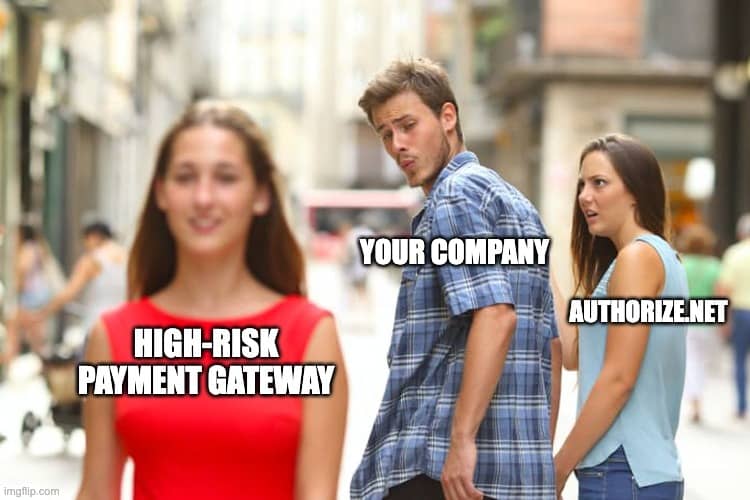What Is a Transaction ID?

In working with a merchant account processor, the odds are good that your business will come across a series of numbers and transaction notes that you may not understand. It would be best if you had a good idea of what you’re looking at to better track your expenses, follow your revenue and make more informed business decisions.
One of the most critical pieces of information you need is your transaction ID. This transaction ID — also known as a transaction number — can provide you with essential information that you will need to monitor all of your transactions. Fortunately, expert vendors — like Zenti — can help you monitor these critical pieces of information and ensure that you’re appropriately tracking all credit card processes.
What is a Transaction ID?
A transaction ID is a number generated from the electronic transfer of funds. It’s a unique identifying number, meaning that no two transaction ID numbers are identical. These numbers can take many forms and are generated with every card transaction. Some credit card processors or electronic fund transfers have their own transaction IDs. For example, a Paypal Transaction ID format is very different from the transaction ID you would find with a Mastercard or Visa purchase.
In many cases, customers can find their transaction IDs on their receipts or invoice. It’s often listed near a variety of other critical information on an order, including the date, merchant, contact information of the merchant, or purchase order number. From an internal perspective, It’s important to remember that a computer will use a transaction ID to sort all information related to that transaction.
No transaction number is the same. This lack of duplication ensures that all transaction information is kept separate and unique from other transactions.
Furthermore, when considering what a transaction ID is, it’s also important to remember what It’s NOT. A transaction ID is not a purchase order number. A purchase order number is a number that is usually internal to the business that is making the sale. A transaction ID is automatically assigned by the credit card or payment processor responsible for managing the transaction. This process happens automatically, without any human input.
All credit card processors will have a payment ID, which should make it easier to learn what a transaction ID is. The only difference is how these IDs will be sorted and where they can be found on a receipt or invoice.
Depending on the transaction ID type in question, you may need to set up certain accounts to search by transaction ID. For example, you would need a Paypal account to search by Paypal transactions. There are even Bitcoin transaction IDsthat can be used to track the purchase of Bitcoin or the use of Bitcoin in a transaction. It’s worth noting that finding payment processors that are willing to engage in Bitcoin transactions can be very difficult. Fortunately, payment processors like Zenti can assist you in setting up a Bitcoin payment account.
Why is a Transaction ID Important?
Transaction IDs are hugely important for many reasons. First, they provide a unique identifier that ties a bank account to a payment processor. This ID is unique as it specifically ties a cardholder or bank account to the purchase in question. This ID can then be searched by a processor, API, or vendor directly involved with the purchase.
The Transaction ID provides a unique record that can be useful in the event there are problems with a transaction later down the line. For example, if a purchaser needs a refund — as is more common with certain high-risk accounts — a refund can be issued by tying the transaction ID to the initial purchase.
A transaction ID should be traced to a variety of important information. This information includes:
- The price of the item in question and how much was processed on the card or payment method used.
- If an item was purchased by a credit card, debit card, or another type of payment, like cryptocurrency.
- The method of authentication that’s used to confirm the purchase and payment gateway.
- Any other important transaction details.
What Does a Transaction ID Look Like?
Depending on the service, a transaction ID will be a unique identification number. It usually appears on the receipt or proof of purchase when a transaction is run. The specific character length of a transaction ID will vary depending on who issues it, but it usually appears as a 12-18 digit code. The actual size of the code varies depending on if payment is run through a traditional card, an iOS device, Paypal, Bitcoin, or more.
When searching for a merchant account processor, your business must ensure that you work with a payment processor who makes this information easy to find, trace, and sort. You should be able to look up the status and amount of a particular transaction with ease. This should be all tie to a payment method, transaction history, and the specifics of a specific customer. This information is not optional, as you may need it to process refunds, determine purchase history, or better manage your inventory. Fortunately, this comes standard with Zenti’s retail merchant services, as well as a variety of other products that they offer.
Are Transaction IDs Different Between Card Processors?
Yes. You cannot figure out what a transaction ID is without first understanding that they vary from processing agency to processing agency. Fortunately, a high-quality merchant account provider can help you manage these various differences and sort a transaction by a transaction ID.
Transaction IDs will vary depending on who issues the payment and the specific processing business. For example, a PayPal transaction number will come in a seventeen digital alphanumeric code. PayPal users or vendors will then be able to sort for a transaction based on their transaction number.
What can Someone do with a Transaction ID?
When it comes to wondering what a transaction ID is, It’s important to understand that this function is absolutely critical for managing a business, processing a refund, or being able to answer the most basic customer questions.
Transaction IDs are necessary in order to look up transaction information or process a refund. It’s important to understand that you are not required to actually have a transaction ID or transaction number when checking out this information. However, it can be extremely helpful. Fortunately, if you have a receipt or other information about a transaction, it may be possible to look up a transaction number without actually knowing that number.
In many cases, a transaction number is used to hold all information about a purchase, including its amount, who the transaction was paid out to, and what card was used in the course of payment. However, most people don’t even realize this. For example, let’s say you were processing a return and went to a retail store to do this. You would likely hand them the receipt, and the vendor would process the return. Whether you realize it or not, the computer is using the transaction ID in order to process the return. That’s right: You’re giving them your transaction ID number without realizing it.
One of the most critical uses of a transaction ID actually has nothing to do with accounting but everything to do with marketing. Think about it this way: A transaction ID holds all of the critical information about a card transaction, including what was purchased and how much was paid. This information can yield a goldmine of marketing data. When accessing information by transaction IDs, you can use it to find who is buying what and then better target your marketing efforts. You need to keep this in mind: When considering what a transaction ID is, marketing is hugely important.
This is another area where Zenti can be very helpful. The service utilizes a high-end payment processor that can be perfect for merchants who are high-risk. This enables these merchants to better analyze what products are at high risk for chargeback, then alter their marketing in order to better adjust for this issue. This allows a merchant to reduce their chargebacks, thus saving significant dollars in the process.
How can a Transaction ID be Traced?
In most cases, a transaction ID is a private number that is untraceable. This means that a person unconnected to a transaction will never have to worry about what a transaction ID is. To trace it, you will have to have the exact alphanumeric code. You will also need to have been involved in the transaction in some way, such as being the payor or the merchant that took the payment. This information should not be available to anyone unless they can prove that they were involved with the payment.
Private information — such as name, address, and credit card details — may be tied to the transaction number. This helps explain why It’s better for transaction numbers to always be kept confidential, thus ensuring that a random person will never learn what a transaction ID is. However, there is good news: This information is usually heavily encrypted. Someone who can find out the transaction number of another individual should not be able to then use that number to get the personal details of the payor in question. This information is typically kept confidential, and access is difficult. However, in theory, if someone had the right hacking tools or access, it would be possible to use a transaction number to gain access to private information.
There is one exception to this: The blockchain. By design, all transactions on the blockchain are publicly viewable with the right information. Again, that’s not to say that you can easily see who used Bitcoin to purchase something, as privacy is one of the chief reasons that a person often chooses to use cryptocurrency. However, as long as one or both of the parties involved use a Bitcoin address, this information will stay private and locked under a Bitcoin pseudonym.
In order to view transactions on the Bitcoin, someone needs to only visit blockchain.info. From there, they could search a transaction by the Bitcoin transaction number, the address, or the block on the blockchain where the transaction occurred.
As you can see, this can be a highly technical and confusing process. However, cryptocurrency is rising in demand and popularity. As a result, many businesses are starting to add support and payment options for Bitcoin transactions. Zenti is one such business: It now has a cryptocurrency payment gateway that is available. This allows users to make purchases and for those payments to be processed over any number of cryptocurrencies. Given the sheer number of cryptos out there, the use of an expert processor, like Zenti, is often associated with a smoother payment experience, an ability to keep appropriate records, and the chance to manage potential payments.
Questions about Transaction IDs specific to certain vendors can often be addressed in the FAQs section of a processor’s website. Users should also be able to reach out to customer support to get questions answered. If a payment processor has any competence, they will be able to trace this information and answer any questions you may have. Fortunately, Zenti has a robust customer support service and can address any of these issues.
Use Zenti for your Transactions
By now, you should understand what a transaction ID is, what a transaction number is, and how this information is often necessary when processing credit card or crypto payments. If you need more assistance, contact Zenti today. At Zenti, we’re here to help, and we can answer important questions like, “What is a transaction ID?” We also have a variety of high-end services and functions that can ensure that you gain access to all of the merchant services that you need. If you have questions, manage a high-risk business, or are looking for additional assistance, reach out to Zenti today.
Read Next

Find out whether Authorize.Net works for high risk merchants, what restrictions you might face and how to get approved.

Get expert advice on selling CBD products on Shopify, including compliance tips and setting up secure payment options.

Find out why Square may deactivate merchant accounts and steps to resolve issues and maintain uninterrupted payment services.
Need a High-Risk Merchant Account?
Disruption-free payment processing at the best price for your situation, guaranteed.
Get Free Guidance Now!